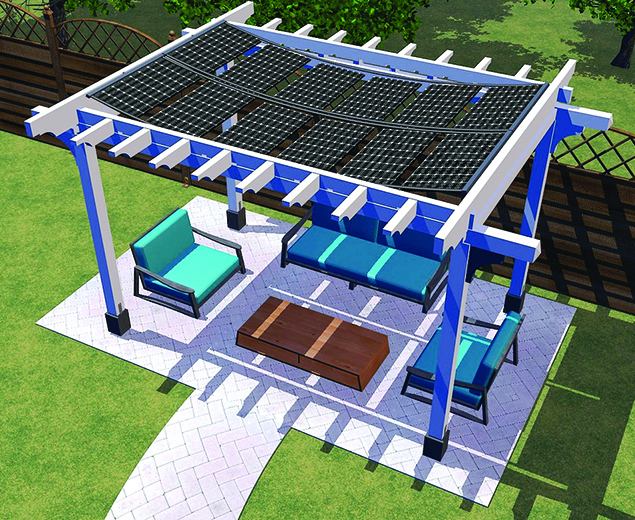
Suspended Solar Panels See the Light
Subheadline
NASA engineering validated pleasing, practical design
Imagine a bridge twisting and rolling as it’s battered by high winds before eventually collapsing into the river below. This happened in 1940, when the Tacoma Narrows Bridge in Washington state shook itself apart on a windy November day. This collapse resulted in huge changes to engineers’ approach to suspension cable-based designs – not only in large projects like bridges but in smaller cases as well.
In 2012, Jim Clair was considering investing in renewable energy and came across concentrating solar power. Unlike photovoltaic panels, which make electricity with semiconductors, concentrators work by reflecting large amounts of sunlight onto a small receiver, heating it up immensely. This heat then generates electricity via a steam turbine. To explore this technology, Clair founded Skysun LLC of Cleveland. Because the Sun changes position throughout the day, moving the mirrors to direct the most light at the receiver is vital. Clair thought a suspended cable design would make moving the mirrors easier, but he recalled the warping bridge.
“Every engineer wants to avoid a Tacoma Narrows,” Clair said. “Anytime an engineer or physicist sees a tensile-based suspension structure, the first thing they think is, ‘We need to make sure this is not going to set up a destructive oscillation.’”
Because his primary education was in economics, not engineering, Clair needed help to determine whether his idea would be safe under high winds. This brought him to the Adopt-A-City program, a collaboration between NASA’s Glenn Research Center in Cleveland, the government of Cuyahoga County, and MAGNET, a local business-development nonprofit. Over several years, the program helped companies across Northeast Ohio improve their technologies with NASA expertise.
Paul Bartolotta, a project manager now retired from NASA, oversaw selecting the companies and matching their problems with NASA experts. After seeing how multidisciplinary Clair’s project was, he chose Skysun as part of the 2016 Adopt-A-City class.
Trevor Jones, a dynamicist at Glenn, went to Lorain Community College to work with a prototype of the system Clair had set up there. Jones induced vibrations in the cables with hammers and took measurements of the resulting oscillations. Based on all this data, Jones designed a spreadsheet that could accurately model the tensile strength of the design against wind-induced oscillations at any scale. With the dimensions plugged in, the spreadsheet program did the math and proved that Clair’s idea would work without shaking apart.
While the company is still pursuing concentration-based solar power, Skysun currently makes installations that use standard photovoltaic panels that can be hung over an area as easily as a hammock. The initial product, Solar Pollinator, is designed to be suspended over plants that thrive in partial shade. Like a concentrator, the panels can track the Sun to maximize exposure.
Skysun has installed multiple Solar Pollinators around the Cleveland area and is preparing to set up its first, larger Solar Pergola system. The pergola generates up to three to five kilowatts of power in places where more permanent solar installations can’t be placed, such as rented homes or leased business space. Clair credits NASA’s help as instrumental to the designs of both these products.
“We could’ve just given him the answer, but instead we gave him a spreadsheet program that works on all his installations,” Bartolotta said. “He kept plugging along, and I’m proud of him.”

NASA developed a spreadsheet program that proved the Skysun suspended solar design would not be susceptible to destructive oscillations at any scale. A larger installation, the solar pergola (artist’s rendering pictured) further advances the design by suspending panels above a patio. Credit: Skysun LLC

The Ivanpah Solar Electric Generating System is an example of a concentrated solar power plant, which works by having hundreds of reflective panels heating up a central tower. The problem of keeping sunlight directed at the receiver throughout the day brought Jim Clair to request NASA’s help in validating the suspended design now used in Skysun solar power systems. Credit: Cliff Ho/U.S. Department of Energy

The Skysun Solar Pollinator is designed to be suspended above plants that thrive in partial shade, and it can generate up to two kilowatts of power. The suspended design was validated by Glenn Research Center dynamicists under the Adopt-A-City program. Credit: Skysun LLC













